The future of the digital advertising ecosystem and measurement continues to change and evolve every day. Growing users’ concerns has reduced consumer trust, which directly affected online advertising.
In the past, marketers had full access to data with cookies and device identifiers. But rising user expectations of privacy as well as new regulations (GDPR) and browser restrictions affect how data can be collected and used, which radically changed the way marketers measure conversions.
As users’ expectations of privacy increase, marketers need to communicate transparently with their customers to keep their trust.
At the beginning of 2020, Google announced its intent to remove support for third-party cookies for Google Chrome in late 2023.
Enter First-Party Data! This is going to be one of the most fundamental changes that digital marketers have faced for years. A full description of what this and what it means for digital marketers is below, but put simply, this change reflects a shift from third-party data collection based on cookies to data collection being the responsibility of the individual company or marketer.
This change has drawbacks, but – as discussed below – if managed correctly, it also opens doors of opportunity.
The Cookies Crumbled
In March 2021, Google confirmed the plan to remove third-party tracking data and announced that “they will not build alternate identifiers to track individuals as they browse across the web, nor will they use them in their products. Instead, their web products will be powered by privacy-preserving APIs which prevent individual tracking while still delivering results for advertisers and publishers“.
While third-party cookies were tracking individual users across the web to find more about the interests of each person, the first-party data put people into large groups with similar interests.
In short, Google will be using a FLoCs (Federated Learning of Cohorts) technology developed from their Privacy Sandbox.
What is Google Privacy Sandbox
Privacy Sandbox is Google’s initiative whose goal is to create standards for websites to access user information without compromising privacy and, at the same time, enable advertisers to carry out online measurement and tracking without the use of third-party cookies.
As Google phases out third-party cookies, first-party data becomes more valuable. Many brands have started focusing on collecting first-party data for better personalising advertising campaigns.
What is First-Party Data
First-party data is the data that organisations collect directly from the consumers. This data can be collected through the website, analytics, the company’s CRM, social media and more.
What information does first-party data include?
First-party data includes information such as website interactions, location, audience demographics, time spent on the website, users’ interest, purchase history etc. In other words, you can see how often users visit your website, what they did while visiting your website and other things that could help you understand your customers and implement and run a successful marketing strategy.
Benefits of first-party data
- Accuracy and relevancy
- Cost-effectiveness
- Data protection and user privacy
- Trust
- Data Control
- Personalisation
- Better Audience segmentation
Differences between First-party data and Third-party data:
As mentioned above, First-party data is owned and collected by the company itself. It includes data collected online or offline.
Third-party data are data collected and owned by someone out of your company that doesn’t have a direct relationship with consumers. It’s collected by web cookies from multiple sources.
Where to start?
Collect data through first-party tagging and other measurement solutions to improve the performance of your ad campaigns. There are three steps you can take:
- Global Site Tagging
- Enhanced Conversions
- Consent Mode (in EMEA)
Let’s dive into each step:
Global Site Tagging
The Global Site Tag is the most important step to ensure accurate and relevant measurement.
There are two global site tagging implementation solutions:
- Gtag
- Google Tag Manager
How to choose the best solution for your business?
1. Gtag is recommended for businesses and advertisers that are looking for a simple implementation to measure ads performance across different Google channels and cross-channel attribution and additional insights, such as enhanced eCommerce reporting.
2. Google Tag Manager is recommended for businesses that need to manage multiple tags on their site. Google Tag Manager allows deploying and configuring tags from a variety of Google and non-Google products.
Enhanced Conversions
Google’s definition of enhanced conversions is:
“Enhanced conversions is a feature that can improve the accuracy of your conversion measurement and unlock more powerful bidding. It supplements your existing conversion tags by sending hashed first-party conversion data from your website to Google in a privacy-safe way.”
Global Site Tag provides the fundament to enable Enhanced Conversions that help you to enable more accurate conversion measurement that is not observed today due to GDPR limitations and help to increase conversion rates across Google channels such as Search and YouTube.
Enhanced conversions will only work if one or more of the following user’s data is available:
- Email address
- Name and home address
- Phone number
In other words, they work only for conversion types where there are available forms that collect customer data such as sign-up forms, subscriptions and purchases.
All information about Enhanced Conversions and how to implement them you can find here.
Consent Mode
Google launched Consent Mode in September 2020. The Consent mode is valid for the EMEA region only. It allows organisations to adjust how their Google tags behave depending on the consent status of their users. It also allows them to monitor conversions and uses the analytics tools while maintaining compliance with GDPR and other privacy regulations.
Consent mode can be used for conversion tracking and remarketing campaigns in Google Ads.
It currently works within scripts and tags for Google Analytics, Google Ads, Google Tag Manager, Conversion Linker and Floodlight.
Consent Mode brings accurate consent and conversion rates.
How it works
Consent Mode interacts with the website’s CMP (Consent Management Platform). CPM collects users’ consent status and transmits it to Google for further processing. Personal data is not sent to Google, only information about website users’ consent choices.
Basically, Consent Mode enables the website to continue measuring vital users’ metrics and, at the same time, respecting users’ privacy preferences—all information about Google consent mode configuration you can find here.
Conclusion
Third-party tracking cookies have always been a source of controversy, and the move by Google and the ongoing tightening of legislation are very likely to be the signal of their demise.
While digital marketers may mourn their demise, it is important to understand the viewpoint of the people that really matter here – the consumer. A growing loss of consumer trust has eroded confidence in the way their data is handled. This move seeks to alleviate this, and if handled correctly, first-party data can be a more powerful and importantly – trusted tool.
First-party data allows marketers to engage with and expand their customer base without losing trust – one of a brand’s most valuable assets. If you haven’t begun to explore how first-party data can help your digital marketing strategy, then hopefully, the tips listed will set you on the road to marketing success.












